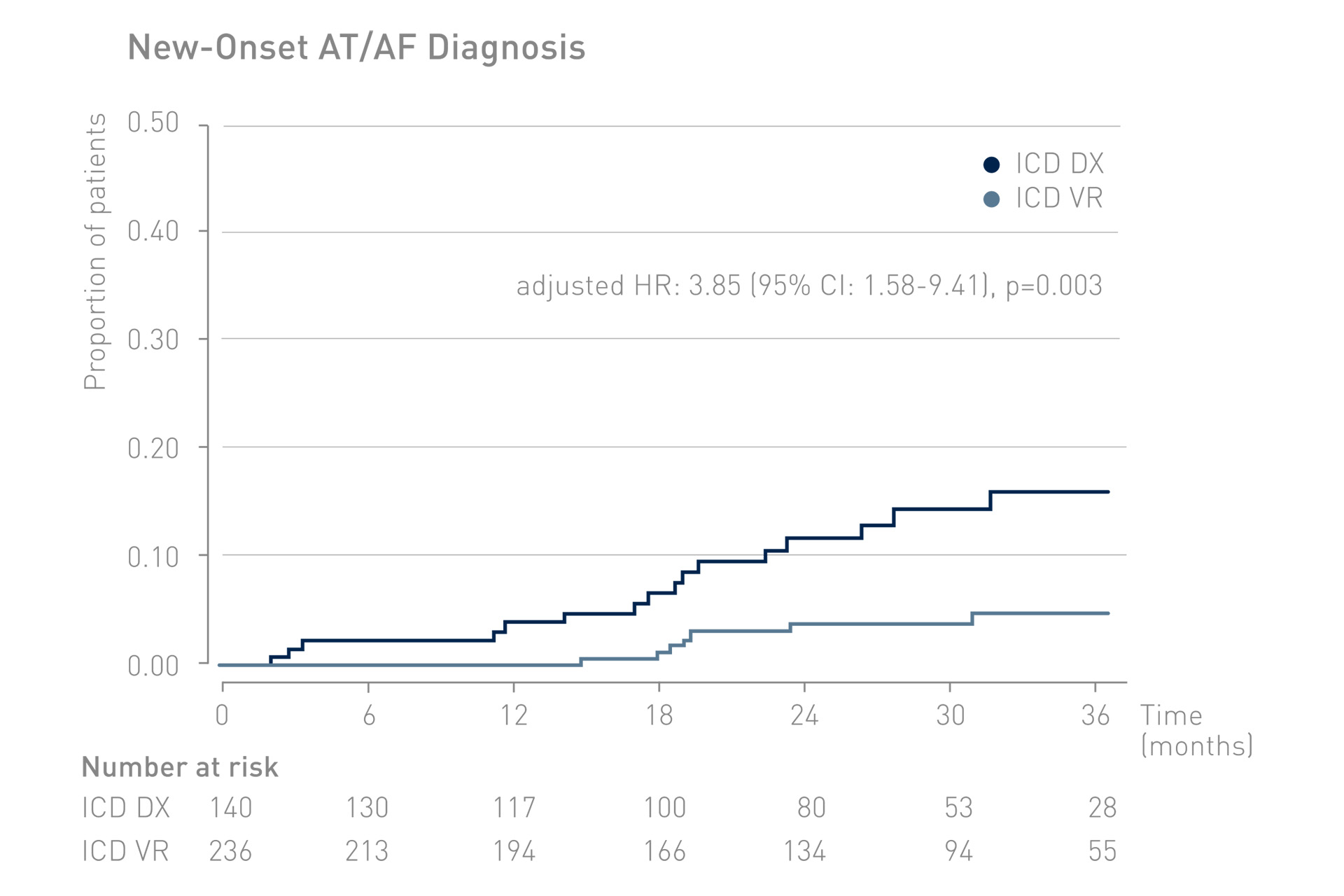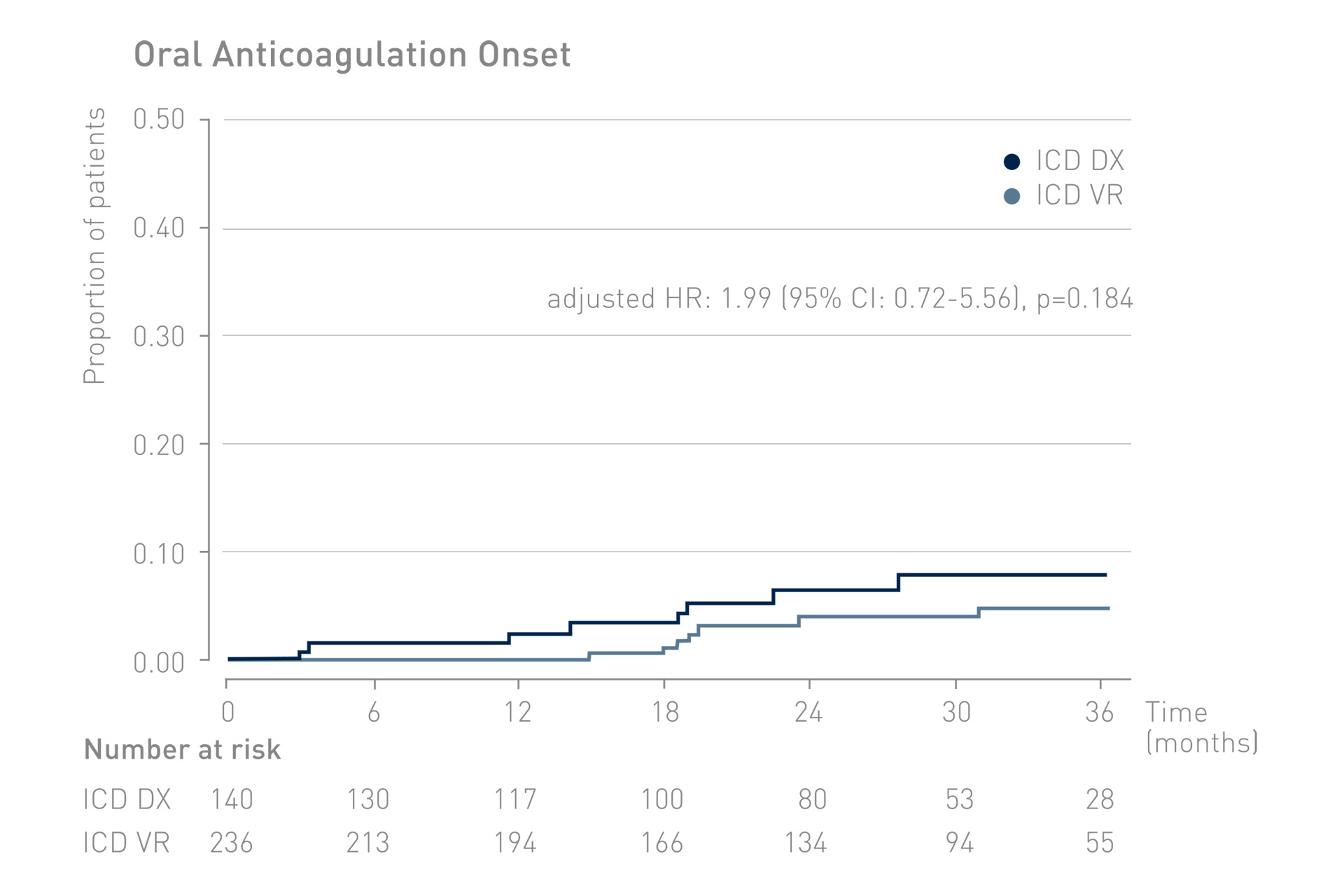Key Results
Key Result 1
Incidence of AT/AF Diagnosis: Significantly Higher with ICD DX Compared to Single-Chamber ICDs

2-Year Incidence of New-Onset AT/AF Diagnosis
![]()
The Role of Atrial Sensing for New-Onset Atrial Arrhythmias Diagnosis and Management in Single-Chamber Implantable Cardioverter Defibrillator Recipients: Results From the THINGS Registry
BIFFI M ET AL., JOURNAL OF CARDIOVASCULAR ELECTROPHYSIOLOGY 2020
doi: 10.1111/jce.14396

![]()

![]()